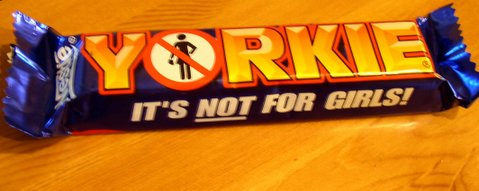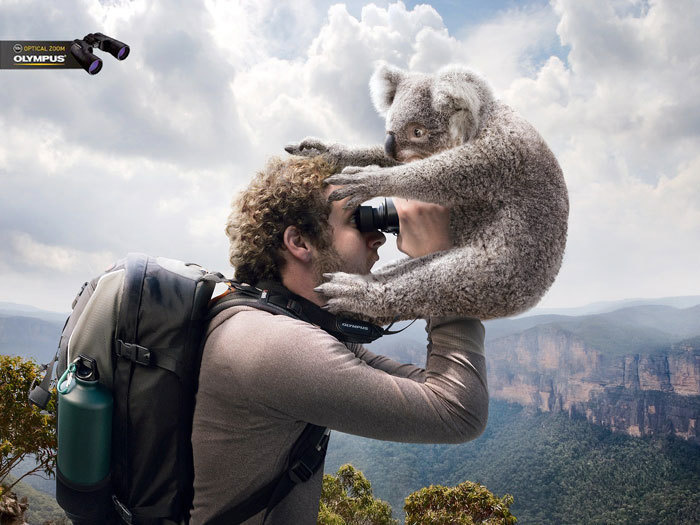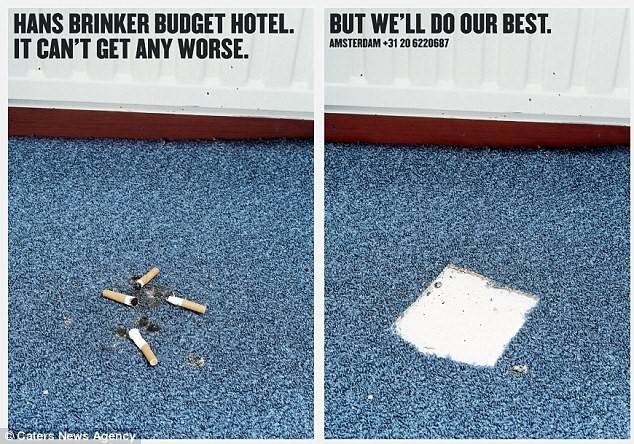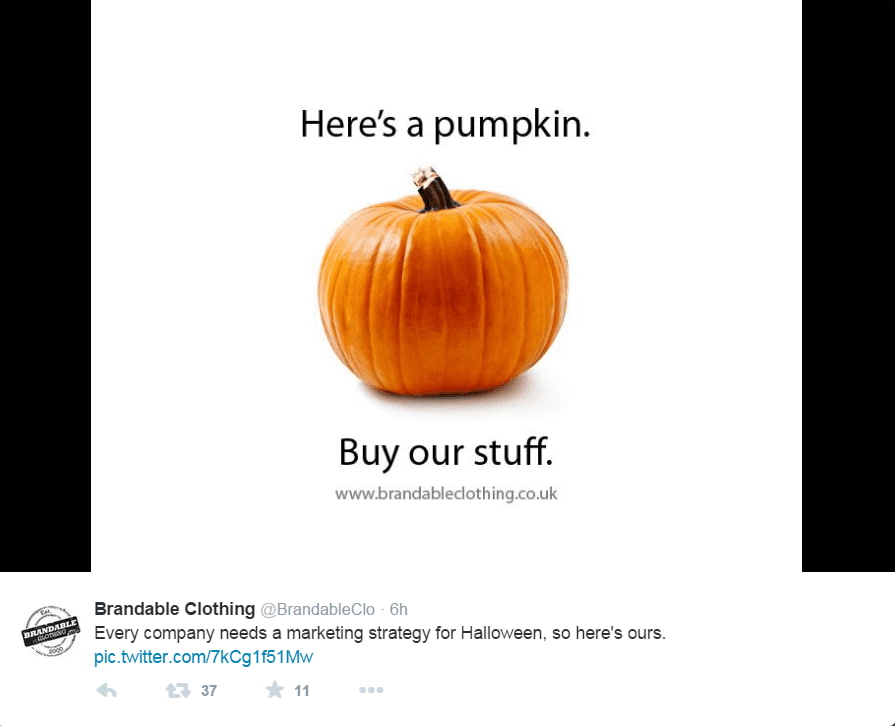Have you ever considered what makes your customers tick and why they choose to buy your products? In this article we’ll be looking in depth at some of the tried and tested psychological strategies employed by advertisers that make their products irresistable to consumers. We’re also giving you some inspiration from major global companies that have used these tactics to their advantage. Enjoy!
The Promise of Happiness

Nothing convinces people to buy like the promise of a new and much happier life and it’s a crucial tactic to adopt when writing copy for your campaigns. Look at 10 adverts and the chances are that over 50% of them will be promising some kind of life improvement, either directly or indirectly.
We’ve all seen ads that make big promises and the chances are you’ve used this tactic yourself as it’s usually the first point of call when looking at how a product can benefit people. However, as you will see from readign this article, it is only the tip of the iceberg and there are many other tactics which you can employ to get people buying.
Most of the biggest ad campaigns that have generated huge profits actually rely on push the product not the results, but sometimes a postive push comes along a rocks the boat. Here are a few of promises put forth by major global business campaigns:
Inspiration:
- Old Spice - ‘The man your man could smell like.’
- McDonald’s - ‘I’m Lovin It’
- Reddi-Wip - ‘Unleash the Joy’
- Compaq - ‘Has it changed your life yet?’
- Vauxhall Corsa - ‘Put the fun back into driving.’
Fear

Fear can be a very powerful persuasive device. It doesn’t mean forcing your customers to buy things at gunpoint but might mean suggesting that not buying your product will leave them susceptible to crime. This is often the case when selling things like home security systems and life insurance. However, fear doesn’t only come from the potential of physical harm. Humans have many different fears and if you can target them correctly then you’ll have people running and screaming to buy your products.
One way to introduce fear into your campaign is to think about the things you fear or at least worry about. They don’t have to be obviously scary things like spiders or murderers. In fact, those are not the kinds of fear which sell, unless of course you’re selling bug sprays and guns. The truth is, phobias don’t keep many people awake at night but not being able to pay the bills and having no milk in the fridge for breakfast do. These are the kind of mundane fears that you can exploit to target your audience where it hurts.
Fear marketing is most commonly used in its FOMO form or Fear of Missing Out but there are other types of fear which can be exploited. Here are a few that you should be reminding people of:
- Fear of not being able to pay the bills
- Fear of not fitting in
- Fear of not being remembered
- Fear of being judged
- Fear of losing everything
- Fear of not leaving a legacy
- Fear of failure
Many of these are deliberately vague and this is so that you can more easily use them in relation to your campaign. Take a weight-loss product for example. You could target your audience by directly telling them that their weight is damaging their health or by implying that being overweight means they simply won’t fit in. This comes with a warning though, that you may get a backlash if you overdo it, especially with weight, as fat acceptance movements and the modern pc culture don’t go hand in hand with harsh truths and traditional advertising tactics. That being said, adverts which don’t beat around the bush still do well and no publicity is bad publicity. Some adverts have even done particularly well in their attempts to divide and conquer. Just look at this campaign for the British chocolate bar Yorkie:

This particular example fits the description of reverse psychology, but it also sits nicely in the FOMO market, as it is intended to make men feel that it is exclusively theirs whilst women are supposed to want it precisely because it isn’t. It is a very lighthearted way to get people talking, although in the US and UK today, advertising like this will probably recieve a negative backlash.
Here are some more famous examples of scare tactics which have been successful.
Inspiration:
- Hallmark - ‘When you care enough to send the very best.’ - This ad is effective because it implies that if you send anything else then you don’t care.
- The Independent - ‘It is. Are you?’
- Specsavers - ‘Should have gone to Specsavers.’
- Dr. Pepper - ‘What’s the worst that could happen?’
- **Volkswagen’ - ‘If only everything in life were as reliable as Volkswagen.’
Social Standing

Have you ever looked over your fence at your neighbour’s garden and thought to yourself ‘Wow! That’s some seriously green grass!’? And have you ever wondered what they think when they see yours? Then you’ll know how important it is to present a good image to those in your immediate vicinity.
Thanks to the ever growing world of social media your friends from school can now scroll through your life with a fine toothcomb and judge you on every little detail. Therefore, it’s important that you are always looking your best. After all, you don’t want that girl that said no to you at prom still thinking she made the right decision do you? No, you want her to see you now that you’re a success and make her wish that she’d said yes.
Social status matters, whether you’d like it to or not, and you shouldn’t be afraid to market to people’s aspirations. People want to be seen doing well and your product could be a status symbol. Just look at ‘Supreme’ clothing as a prime example and you’ll realise that a lot of people are willing to pay a lot of money for very little if they believe that their is some status to be gained by it.
Inspiration:
Clairol - ‘Does she…or doesn’t she?’ U.S. Army - ‘Be all that you can be.’ Wheaties - ‘Breakfast of champions’ Harley Davidson - ‘American by birth. Rebel by choice.’ 02 - ‘Be More Dog.’
Limited Availability

Limiting availabilty is not purely about making people by quickly, it can also be about making people buy exclusively. This means driving your products’ sales based on the luxury, one of a kind, quality. People like to feel that they are unique, and one way to exploit this is to offer them a unique product which their friends don’t have.
This is a common technique used in perfume adverts, which rely on advertising that makes consumers feel special and noticed. If you’ve ever seen an advert which tells you that buying the product will make you stand out in the crowd then this is exploting the idea of limited availabilty and social status.
Pushing a product by saying that a lot of people are going to want to get it quickly, therefore you should buy it now, can work in quick campaigns, but it can damage brand loyalty in the long run. If you think about products that a lot of people do actually want, like a new iPhone, the tactic of saying that people want it is not employed. Instead, they tell people that owning an iPhone is unique and makes them special, despite the fact that they probably had to queue for 5 hours to get one.
Inspiration:
Apple - ‘Think Different’ Tiffany & Co. - ‘There’s only one.’
Humour

Humour is a staple of British advertising and if you ever want inspiration for your campaigns then a quick search online will pull up thousands of results.
Humour can be applied in a number of ways and in the UK, Marmite decided to launch a ‘Love it. Hate it’ campaign, knowing that a lot of people hated the product. The result? An honest campaign which has helped boost sales worldwide with people challenging those who have never tasted it to try it. Jus tcheck out this brilliant 2013 campaign for the company, which likens those who buy Marmite but don’t eat it to animal abusers.
In any other context this would be a scathing endictment, but Marmite’s advertisers handled the product perfectly, producing a stellar campaign. What’s more, if you’re not familiar with the narrator’s voice, it’s actually Micheal Beurk, a much celebrated British journalist and newsreader who voices many popular emergency service documentaries.
It is possible to poke fun at your product and give it a more human touch, though self deprecation of the level of Marmite is much better suited to a British audience than a U.S. one.
Inspiration:
Marmite - ‘Love it. Hate it. Just don’t forget it.’
Humanisation and Anthropomorphism

Do you like videos of cute cats and dogs doing silly things? So do your customers and if you can generate a campaign which utilises them well then you will create something truly memorable.
It doesn’t have to be an animal which you bring to life, it could be your product or any being which you conjur up that you feel is relatable. It’s also possibel to create a character which is so annoying that people can’t help but remember them. Just think of the British ‘Go Compare’ opera singer banished to oblivion by the late Stephen Hawking or crazy frog which was adopted my mobile app companies to sell ringtones in the mid-naughties.
If you’re any good with computer animation or can employ someone who is then you have the potential to make the next viral mascot to help push your campaigns on a global scale.
Inspiration:
02 - ‘Be More Dog.’



Reverse Psychology

Reverse psychology can be a great way to engage with customers on a deeper and more personal level whilst at the same time drawing new attention to your product. By highlighting negative aspects of a product and joking about them, you can, in many ways, reduce the damage they do to sales.
Some products and places even market themselves wholly around being terrible with great success. There has been a rise in recent years in the number of restaurants popping up which offer surly staff and a hostile atmosphere during your meal. Why? Because there are a lot of people out there who find the ‘nice for the sake of being nice’ false service to be a worse alternative to people being honest.
Here are a couple of places that have had people flocking through their doors because they offered the opposite of a good time. What’s more, when you advertise that something is amazing, people expect there to be a negative catch. When you tell people that things are awful, what do they expect? That’s right, a positive catch.
Inspiration:


Warning: Beware the Bargain
If you’re attempting to create quick sales and don’t wish to build a brand image then discounts and introductory offers can be effective, however, they tend to kill rather than cure and unsustainable offers to get people interested do not create longterm customer loyalty. Therefore, it’s important to be careful how you present your products for the first time as the majority of new brands that fail, do so precisely because they don’t look at profits but at units sold and units sold during an offer period can be a really poor indicator of units sold at full price.
If you want to build loyalty then you have to offer something that fills a gap in people’s lives in a such a way that it becomes a part of their lives. Remember this in your next campaign and you’ll see the benefits.
One of the most important things when advertising your product is that you should have fun doing it. If you don’t, then get someone who does. Advertising should be playful, creative and get people to engage with the product in some way. If that process is being stifled by a lack of desire to do the work involved then your campaign will suffer as a result.
Here at ConvertingTeam we love making ads and if you join us today, we can promise to give your ad campaigns the care and attention they deserve in order to maximise your conversions.

